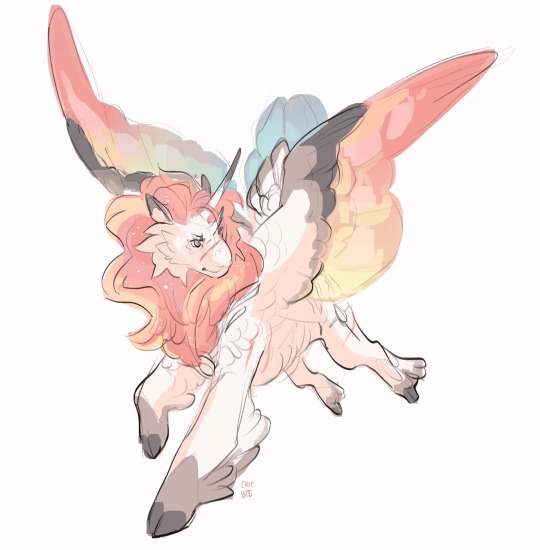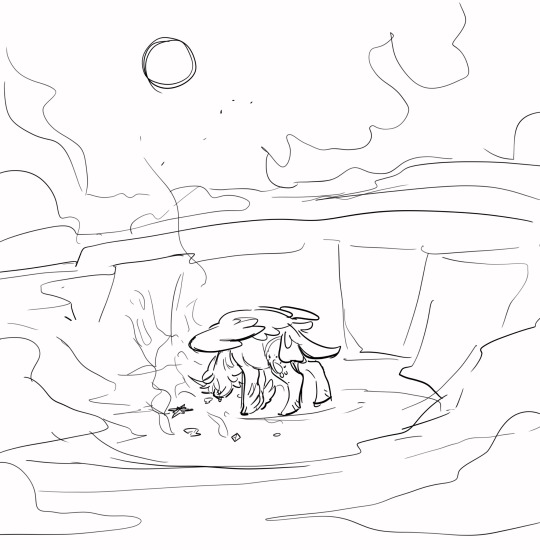#artistic intervention
Explore tagged Tumblr posts
Text

'GEIL' / 1997
LED animation for public LED billboards in Leipzig
On the occasion of the Leipzig Book Fair in 1997 (March 19. - March 23.), I made an update of my LED animation 'I'm so GEIL says inge meise' based on the quote by Elfriede Jelinek. The LED billboard in Leipzig had now become larger and shows several colors. The selection of animations shown was curated by Prof. Dieter Daniels. The work is to be understood as an intervention in public space. Back then, the advertising sections of newspapers were full of telephone sex advertisements with small imaginary portraits of women and the Internet became popular with adult content. I used these images as a template for my animation. As a so-called 'Easter egg', in addition to the quote, an IP address was displayed that referred to a fake 'porn website' called 'Inge Meise Chatline'. This website did not show any explicit content but repeated introductory texts over and over again. The subversive thing was - the IP address belonged to the website of the Academy of Fine Arts Leipzig (hgb-leipzig.de). So if you accessed the art school's website using your IP address, you would get to the fake porn site. This situation lasted until the summer of 1997, when a new HGB IT employee unknowingly took the website offline. However, the website can be accessed here for documentation purposes:
Website: Inge Meise Chatline
#sb9100#mediaarts#1990s media arts#animation#led billboard#Leipziger Buchmesse#Elfriede Jelinek#public space#public arts#artistic intervention#feminism#Literature Nobel Prize#Leipzig Book Fair
0 notes
Text

Idiot moron dumbass forgets to eat and sleep for like three days. Passes out like a stupid fuck
#never need an excuse to draw Astrid bridal carrying Hiccup#httyd#how to train your dragon#realistically there is no way he didn’t constantly work himself to complete exhaustion#FUCK I need the riders doing an intervention for him cuz they’re all getting really worried as a fic NOW#hiccup#hiccup haddock#art#digital art#my art#my artwork#httyd hiccup#artist#Astrid#astrid httyd#astrid hofferson#buff astrid#buffstrid#astrid x hiccup#hiccup x astrid#hiccstrid#biblically accurate hiccstrid#astrid rtte#httyd astrid#hiccup httyd#hiccup whump
2K notes
·
View notes
Text


Me thinking about honses.

(Are they gods? Or unfortunate magical experimentations? When did the world blink, and they’ve grown— but not old, nor wise?

At least they’re sisters, and they have each other.
At least.

At least.)


Anyways here’s my doodles for a possible luna and celestia! They’re ancient alicorns, ascended during a great war that would later shape equestria as a primarily pony continent. (The modern alicorns are made with love. The ancient alicorns are made with desperation. Nightmare Moon and Daybreaker are not accidents.)
#mlp#mlp redesign#critdraws#hey remember when I said I’m not a mlp artist#IM STILL NOT.#BUT LIKE#FUNNY HORSE SISTERS CAUGHT UP IN THE CYCLE OF VIOLENCE AND NEEDING MORTAL INTERVENTION TO BREAK FREE….#celestia mlp#luna mlp#nightmare moon#mlp luna#mlp celestia#alicorn#alicorn redesign#mlp world building#luna#celestia#myart#mlp gen 4#character sheet#art#MY SHORT CELESTIA PROPOGANDA COMES FORTH#Rest your Weary Hooves in our New Found Home
3K notes
·
View notes
Text


Do I have anything to say about this. Nothing besides I regret nothing.🚶
original under cut:


#greek mythology#mythology#greek mythology au#tagamemnon#greek epic#achilles#patroclus#modern au#ocs#kupid gallery#kupid ocs#divine intervention#divine intervention au#divine trio#yumejoshi#yumeship#self shipping#kinda#oc x canon#artist on tumblr#artists on tumblr#achilles pelides#achilles fanart#achilleus#achilles x reader#patroclus x reader#patrochilles x reader#patroclus menoetius#patroklos
70 notes
·
View notes
Text
Had to intervene he’s being too mean to Clippy
#kinito crew#kinito fanart#artists on tumblr#jade the jellyfish#kinito the axolotl#kinito pet#sam the sea anemone#kinitopet#mini animation#microsoft clippy#clippy#get along shirt#intervention#just because he’s not spyware does not give you the right Kinito
299 notes
·
View notes
Text

Blacked out and drew Alphonse Mucha's 'Flirt' but with my divorced clowns. for some reason!!!! (ref under the cut)

#my art#ocs#dnd#artists on tumblr#digital art#hi i have my divorced ocs on the brain i hate them im obsessed with them....bard4bard is a bad idea#catharsis is who im gonna try and play in a campaign hopefully soon. troy is his ex husband#their relationship got so bad the entire circus had to stage an intervention <3
90 notes
·
View notes
Text
Day one suffering rivals withdrawl i need to see my big mann,,,,,,
#marvel rivals#snap chats#wheezing dying coughing throwing up. that might just be because i ate#HELP MEEEEE I WANNA PLAY RIVALS :(((((((( STUPID LAPTOP#big beefy magnet man who can pop my head like a grape 🥺 i need to see him 🥺#just reminded myself last night at the wee hours of the evening i saw the most beautiful rival mags are#and i didnt rb it like a fucking. IDIOT#i remember the artist so i could just. look em up…… too lazy for that rn….. moving on…#I WANNA PLAY WITH MY MAGNET MAN //explodes room with my telekinesis//#my big beefy wall magnet man 🥺 i wanna protect my teammates and throw rocks at people 🥺#i love how i refuse to call it meteor or whatever sorry im too used to calling it ‘rock’ from when id play sigma#am i really going to spend all jight thinking bout how much i wish i could play rivals. i need. MEDICAL INTERVENTION !!!!!!!!!#it is not my fault i miss my big man Sir Thats My Emotional Support War Criminal Can I Have Him Back#please…. prety please… i need to listen to how he enunciates things again…#i love how he speaks and the way he pronounces things… why he sound like that lol… i love him…#someone put fucjing NONSENSE in my wrap tonight i swear. im gonna go be like Semi Normal#thats right two hours of nothing but me and the road and the same thirty songs i listen to#and my magneto plush…….. hhhhhh magneto…..#BYE GET HELP !!!!!
37 notes
·
View notes
Text
this timer sucks
it's random
it's random
well it ranDomly suckS
- julia, jacob, + nathan
#they're killing me how am i mesnt to pick One quote from the elmer fudd dream intervention bit#drawing but we have to switch artists every time a random timer goes off#drawfee#drawfee quotes#drawfee video#jacob andrews#jacob drawfee#nathan yaffe#nathan drawfee#julia lepetit#julia drawfee
50 notes
·
View notes
Text

'ich bin so GEIL sagt inge meise' / 1996
LED animation for public LED billboards in Leipzig, Berlin, Hamburg
The animation is based on a quote by Elfriede Jelinek and was made for an award. The animation was created for an art prize that was intended to promote the first public LED billboards in Germany. Together with my fellow student at the time, Markus Soukup, we won third prize and the animations were then shown in public spaces in Leipzig, Berlin and Hamburg.
#LED Billboard#animation#Elfriede Jelinek#media arts#1990smediaarts#feminism#sb9100#literature nobel prize#artistic intervention
0 notes
Text

If Guillermo still got to be a vampire 😳👉👈
#I was gunna draw something else but I dreamed abt Guillermo so divine intervention fellas#guillermo de la cruz#what we do in the shadows#wwdits#wwdits season 5#wwdits spoilers#vampire#myart#artists on tumblr#art
103 notes
·
View notes
Text

Absolutely love the ordon fit
#zelda#legend of zelda#artwork#my art#twilight#twilight princess#link#artists on tumblr#still figuring out how to use this site#the amount of times i had to pause this drawing#i wouldve thought it was divine intervention#cant draw cats for shit#reference practice#digital art
196 notes
·
View notes
Text

"Curiosity" 2021, Interventions series, artwork by Vorja Sánchez, Barcelona, Spain
#vorja sanchez#photography#photo drawover#spanish artist#spanish photographers#2021#curiosity#interventions#photographs#photo#art#arte#kunst#artwork#obra de arte#kunstwerk#vorja sánchez
13 notes
·
View notes
Text
late night doodles (self indulgent)





For the doodle that goes “you seem like you’d get impregnated by a Greek gods. The inspiration for that is under the cut.


#greek mythology#mythology#greek mythology au#greek epic#tagamemnon#achilles#patroclus#modern au#ocs#oc#oc x canon#yumejoshi#achilles x reader#patroclus x reader#patroklos#pyrrhus#neoptolemus#kupid gallery#divine trio#divine intervention au#divine intervention#artist on tumblr#small artist#doodles
23 notes
·
View notes
Text








Blu
Barcelona, 2023
#blu#street art#urban intervention#mural#wall art#graffiti#social protests#contemporary#italian artist
12 notes
·
View notes
Text
Idgaf about Carrie Underwood
Nothing could've prepared me for The Village People choosing to perform for Trump and claiming there's nothing gay about Y.M.C.A.; they literally banned him from using their music before & claiming they don't make gay bangers is EXTREME US music history erasure
I know Republicans been erasing US history as far back as the Daughters of Confederacy, but Y.M.C.A. is explicitly a time capsule of summarizing when gay US men were cruising at YMCAs & the LGBTQ+ disco scene
Like imagine Chappel Roan saying Pink Pony Club isn't about The Abbey 40yrs later, wtf?!?
Carrie Underwood is just trying to revive her dead career with a $1 necromancer move and failing miserably, but full on US culture, disco, and LGBTQ+ histories are intentionally being altered in real time & it's horrifying
I'm genuinely flabbergasted. Maybe it's because I'm more aware about LGBTQ+ history in general than most around my age but how can elders- born from WW2 witnesses and survived multiple epidemics & pandemics, learn nothing?
Money & deals with fascists are temporary but guarantee your death in all outcomes
Bruh
#mun post#im so fucking mad#like forget a bitch being the bitch for a minute#we can't just all sit here and pretend 46yrs of US history about censorship and LGBTQ+ discourse was all fake this whole ti#-me and if it was then the Village People are implying ALL of the Village People's music is not Gay#that's actually delusional and absurd behavior that warrants genuine calls for medcial intervention#you can't just say “just kidding” 46 years later knowing how significant Y.M.C.A. was for LGBTQ+ artists globally but especially#right as HIV and AIDS would occur and puts tons of people back in the closet until the 2010s rolled around#i'm pissed#this is the bad place#village people#us politics#us music history#disco#lgbtq+#boycott village people#boycott carrie underwood#cabaret never fails to be relevant but gods all the people who should watch the musical/movie jsut never fucking do *annoyed noises*#also a $1 necromancer move is when they flip a dollar coin and only revive the head or tail - you're welcome dnd community for my brain rot
16 notes
·
View notes
Text

whoever gave pedro this role; thank you for your service
#art#artist#izzieedrawsart#pedro pascal art#pedro pascal#marcus acacius#gladiator 2#traditional drawing#sketchbook#i keep drawing pedro#his feautures are too lovely not to draw#maybe i need an intervention#maybe it‘s maybelline
28 notes
·
View notes